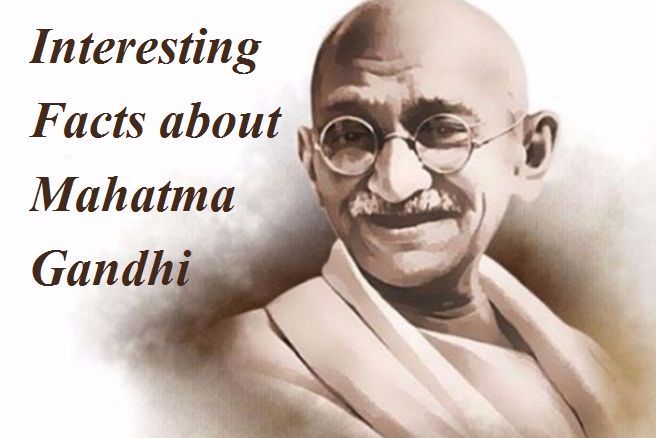
Mahatma Gandhi
The “Father of our Nation” who is renowned as Mahatma in India and elsewhere in the world, played a huge and undeniably unique role in the freedom struggle of our country. His instrument of non-violence made him an international figure because, in a world where violence and war were and still considered the sole means of any change or struggle, he chose to hurt his own body – through the long hunger-strikes and the thin loincloth that he used in the coldest of months. But there were other seemingly inexplicable aspects to Mahatma that few people know of.
Mahatma, whose real name was Mohandas Karamchand Gandhi, steadily rose as a national leader after his return to this country from South Africa in 1915. In 1919, after the Rowlatt Satyagrah and the Jallianwala Bagh massacre, he began to plan a national Non-Cooperation Movement. In 1920, he launched it on a national level. The key was to achieve cross-communal support, with the Deobandi Ulama issuing a fatwa ordering all Muslims to support Mahatma. His reputation instantly became international, and the oppressed Blacks in America began to consider using his methods.
In 1942, Mahatma launched ‘Quit India’ Movement under the slogan ‘karenge ya marenge’. After the Second World War, a Labour Party led by some rational and venerable leaders like Laski and Atlee came to power in Britain and India achieved Independence in 1947. On January 30, the following year, Mahatma was shot by Nathuram Godse, an earlier member of the right-wing organization RSS and an acquaintance of Savarkar. Soon, Mahatma became the ‘Father of India’. Disrespecting him became treason. All parties claimed Mahatma Gandhi through the claim that they were the best followers of his ideology.
But the image that people have of him is mostly one-sided. Mahatma had a great many other aspects to him which he disclosed in his famous auto-biographical book ‘My experiments with truth’ – perhaps the most honest auto-biography of the world. Mahatma admitted to have eaten meat in secrecy, stolen and even smoked at certain points of childhood. With both negative and positive sides, he was always a complex human being. Here, we will focus on a potentially negative aspect of Mahatma Gandhi: Racism. Yes, racism!
Mahatma Gandhi went to Natal, in South Africa where there was a growing population of Indians and British coming as colonists. He quickly got involved in local politics to get voting rights, etc. for Indians. He wrote an appeal in 1895 calling for voting right for Indians and wrote, ‘It is true England “wafts her sceptre” over India. The Indians are not ashamed of that fact. They are proud to be under the British Crown, because they think England will prove India’s deliverer.’ Further he gives an impression that he greatly supported European colonization, did not worry about the enfranchisement of Native Blacks and thought that British occupation of India was consensual. Each of these aspects is shocking. The native blacks of Africa were, in truth, being exploited and treated like animals by the British.
The first political success of Mahatma in South Africa was to get segregation applied between Indians and Blacks in Durban post office. In his multiple letters and appeals, he emphasised that the British opinion that Indians are the same race as Blacks is incorrect. Mahatma opined that, “both the English and the Indians spring from a common stock, called the Indo-Aryan”. Moreover, in 1903, when the White League raised the fear that Indian immigrants might overtake the colony from whites, Mahatma once again said that, “We believe also that the white race in South Africa should be the predominating race”. The idea of giving rights to Natives was not even considered by him. He accepted the white rule as supreme. In 1907, when he had been imprisoned shortly in Natal, the Mahatma was indignant that he had been classified as a ‘Negro’, and protested that he is superior to them. Such an action on his part may sound completely implausible to many of us now. Long after that, in 1939, Mahatma advised the Indian community of South Africa that they should not express solidarity for the indigenous Bantus people.
Once I read another apparently genuine quote from Mahatma, though I am unaware of its background but it reads like: “Your Petitioner has seen the Location intended to be used by the Indians. It would place them, who are undoubtedly infinitely superior to the Kaffirs, in close proximity to the latter.” Kaffirs was a derogatory term used to describe black people in South Africa by the whites.
But Mahatma did not remain a racist for long. In 1929, he told the Negroes not to be ashamed of being the descendents of slaves, because it is shameful to be a slave-owner. Martin Luther King Jr., the Black Christian activist believed that Gandhi’s methodology of struggle was the only one that could solve the race problems. And indeed, the non-violent movement was successful in that case also; the laws of racial segregation were abolished in the Southern states of USA. All blacks got voting right.
It is not improper to say that Mahatma had for a large part of his life been a racist. But he changed and later felt that all human beings deserved equal respect. He also began to condemn all forms of exploitation. This change transformed him into the real Mahatma that we know now. The racist feelings that he had carried in his heart for a long time were also one of his many peculiarities.
Writer Bio : Aniruddha Aloke, Virar, Mumbai


